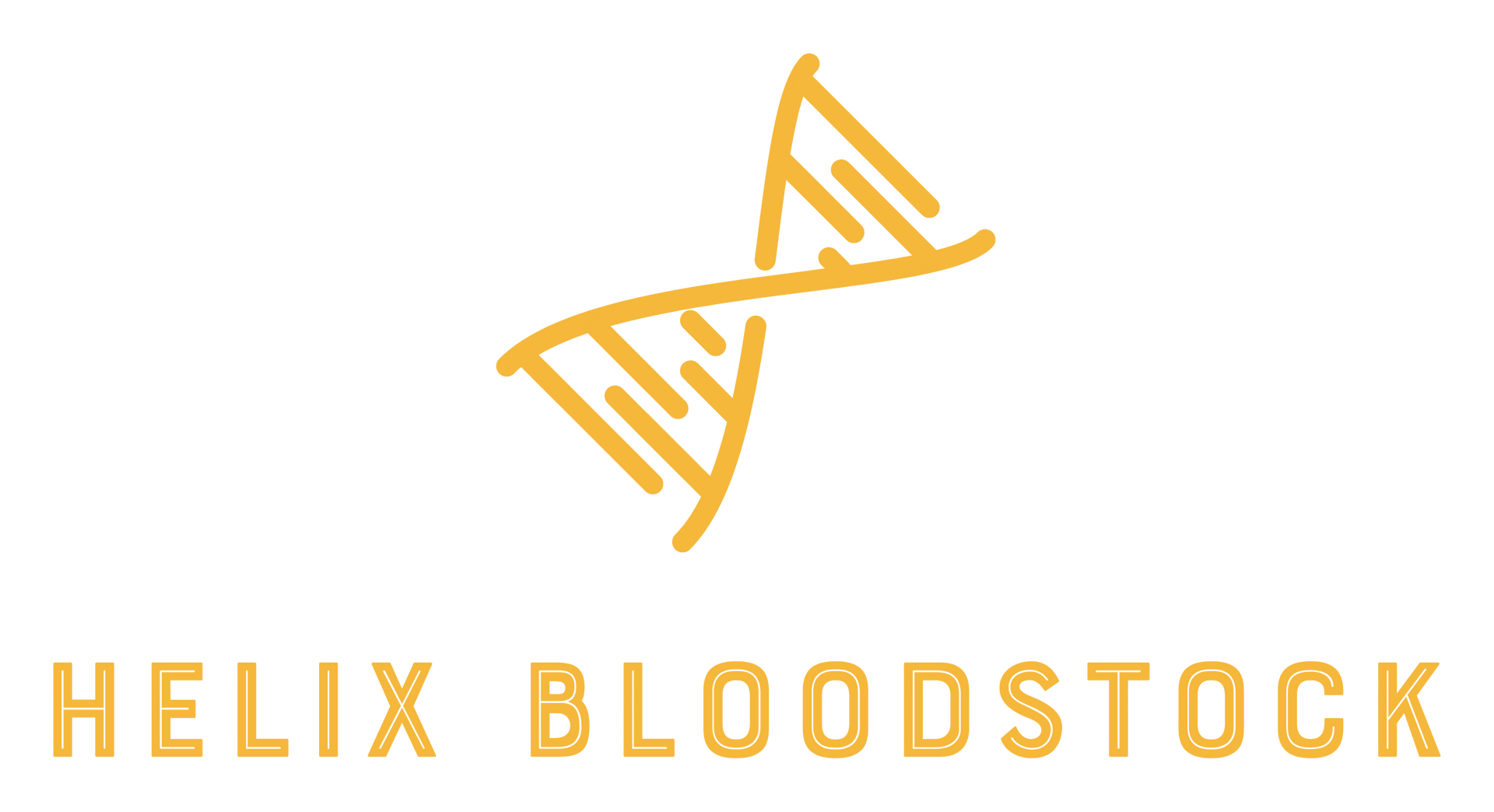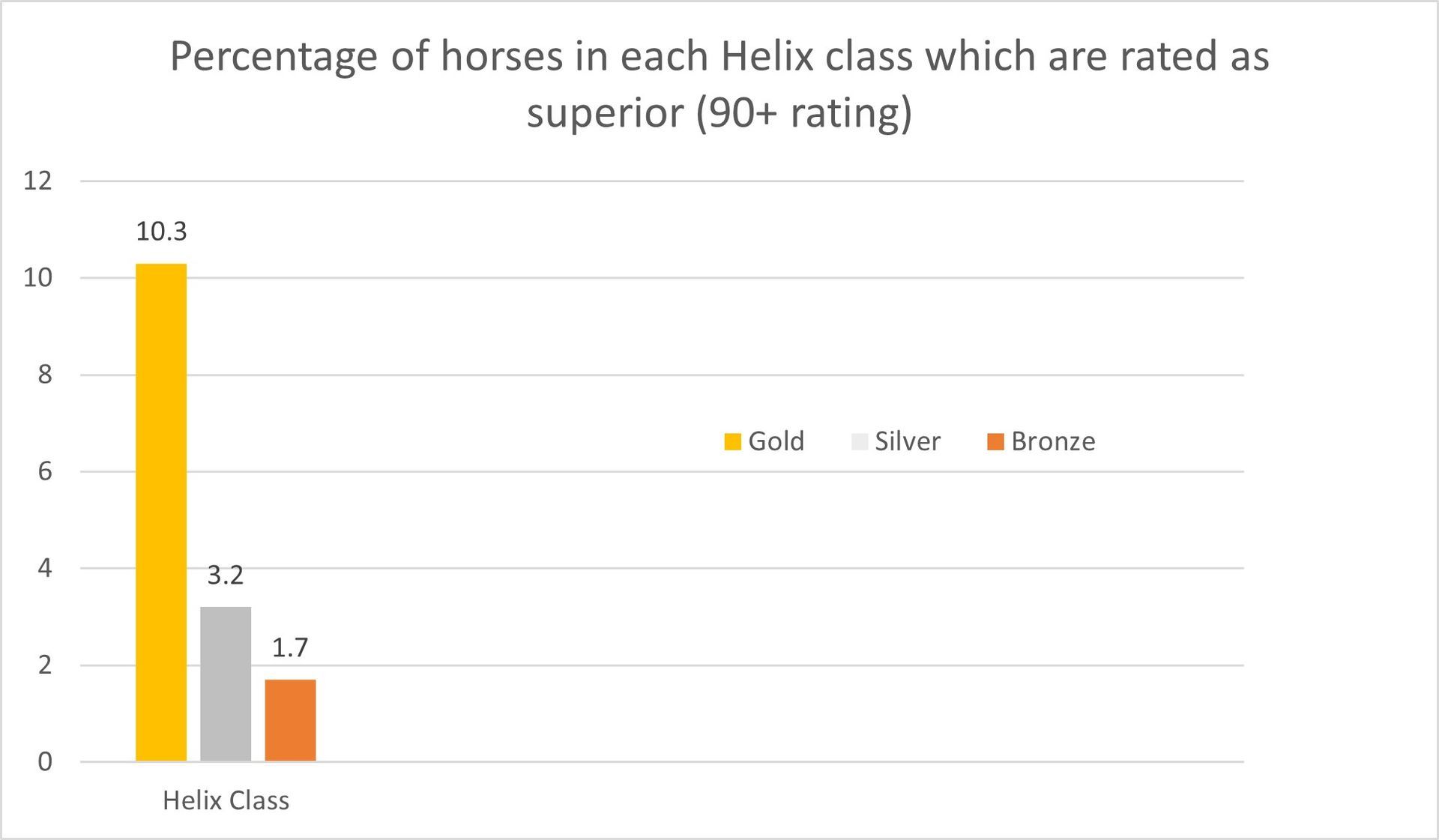What We Do
Helix Bloodstock measures variation at the DNA level in genes associated with racehorse performance. Based on this genetic analysis, horses can be separated into three separate groups, with each group containing significantly different proportions of superior vs average horses.
This classification provides valuable insight into the genetic potential of each horse to become a superior racehorse.
- Horses classified as Helix Gold have a much higher probability of achieving a peak racing rating of 90 or higher than horses in the Helix Silver or Helix Bronze categories.
- Gold level horses are up to 7x more likely to achieve a rating of 90 or more than a Bronze level horse.
- And up to 3x more likely to achieve a rating of 90 or higher than a Silver level horse.
*Superior horses are those horses which achieve a peak rating of 90 or higher.
**Average horses include all horses which do not achieve a peak rating of 90 or higher, including maiden and unraced horses older than 2.
Helix Gold
Over 70% of superior horses tested have the Helix Gold pattern, whereas only 32 % of average horses have this pattern.
The average maximum rating of all raced horses in this category:
79
Helix Silver
Only 15% of superior horses tested have the Helix Silver pattern, whereas 22 % of average horses have this pattern.
The average maximum rating of all raced horses in this category:
59
Helix Bronze
Only 14% of superior horses tested have the Helix Bronze pattern, whereas as many as 44 % of average horses have this pattern.
The average maximum rating of all raced horses in this category:
45
Ph: +61 493711610
Postal Address: PO Box 66, Mitcham Shopping Centre, SA 5062
email: helixbloodstock@hotmail.com
www.helixbloodstock.com


